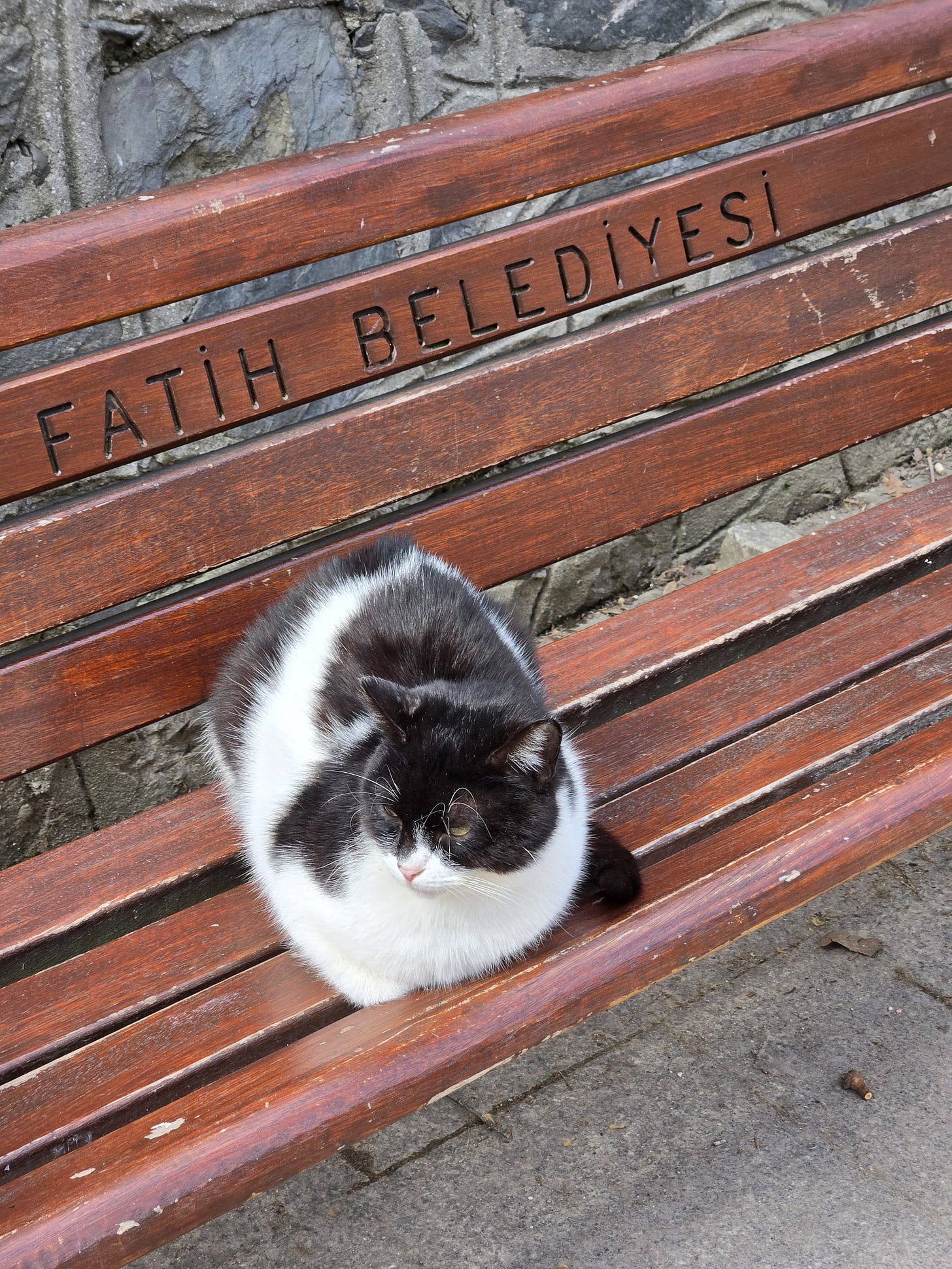
Hello. I am writing this in the air between Belgrade and Reykijavik.
Yesterday I briefly mentioned the Cats Who Rule Istanbul, but the subject demands more detail. Cats of all physical types are everywhere in the streets; there are said to be a half million in the city, maybe more. In Turkish, each is a sokak kedisi, or "street cat." They are considered feral but not stray. To the Turks, cats occupy an unusual, elevated social stratum: Everyone feeds them but no one owns them. They belong to themselves, or to everyone communally, which is philosophically similar because the distinction only attaches when an animal needs, say, medical assistance, and the responsibility for this sometimes takes a village.
None hungers for food. People leave kibble in little bowls, and shredded kebabs and milk. Pita bread. Whatever.
Cats are treasured, in part for their independence and swagger, mostly for their freedom, a freedom of full access and full expression that Turks themselves these days sometimes do not know.
So, cats. In Istanbul. Some look a bit commonplace …
… and some are far from commonplace.
All the cats, it should be noted, have mastered “the loaf,” as in the cat on the bench at the top of the page.
Some Istanbul cats seem to be loners, some seem to live in packs, like wolves …..
Sometimes the packs defy species-chauvinism. This cat and this chicken live in the same pocked courtyard, sharing scraps. They seem inseparable.
Birds are treasured, too here. This one is a huge species of crow, which the locals call a karga. The cats leave him alone. They are not idiots, those cats. He is as big as they are, and wilier.
And finally, what of the DOGS of Istanbul? What of them?
They keep their distance. They’re not easy to find. Here is a shepherd mix we saw on the roof of a building near the Grand Bazaar. He stood there for at least a half hour, barking indignantly at the World of Cats below, demanding to be heard and seen. He went ignored, maddeningly ignored.
And now for some genuine STRAY thoughts:
Ruminations on Missed Opportunity: My biggest regret on this trip was not leaving enough time to take a ferry out of downtown Istanbul on a several-hour cruise. I don’t care much about narrated urban tourism from a ferry — I seldom go for such things — but this one offered something irreplaceable. With this trip, I have now been to four of the Earth’s seven continents — North and South America, Africa, and Europe — but this one ferry ride would have briefly brought us into the Bosphorus Strait, from the part of Istanbul that is in Europe to the part, the small part, that dips its toe into Asia. I could have crossed an item off my bucket list.
—
Ruminations on Roots: We stayed at an excellent Turk-owned hotel. In the lobby was an elegant restaurant, an elegant bar, an elegant spa. Then you walk into the elevator and encounter this huge ad:
Istanbul appears to be the world capital of hair transplants / hair plugs. Apparently cheap and safe and good. People come from worldwide. How much of an industry is it? At the airport as we were leaving we saw three men with very odd and sore-looking bald heads half-wrapped in gauze.
—
Final Ruminations on Food: I told you yesterday about the magnificent, enormous fresh raw honeycombs that sweeten the breakfast yogurts, at least in Istanbul hotels. Three more observations:
The Turks have perfected a dessert, among the finest, most decadent post-prandial treats you’ll ever experience. It’s called katmer, a flaky pastry filled with clotted cream, ground pistachios, and (I think) a little butter and honey.
This next rave will seem odd: Shawarma — known here as doner kebab — is similar to what you buy in the United States from trucks with vertical cylinders of lamb, from which they shave your portion, in a pita. Except, at least in Istanbul’s Grand Bazaar, it is not remotely like what you get in the United States, for two very important reasons. First, it is heated not with an electric grid, but with smoky coals. The Turks know how to assemble a vertical oven of exposed coal. And second, they appear to plop a huge dollop of fat atop the cylinder of meat; it drips down as the meat cooks to glistening perfection.
And lastly and leastly (and I hope this fills you with joy): The Turks — fine cooks — also use those little baby ears of corn in their salads just like we do, but their ears are about three times the size of the type we find in Chinese restaurants, etc. These are big mofo baby ears of corn. And guess what?
THEY ALSO SUCK.
This was how we sent the plate, drained of its otherwise excellent avocado salad, back to the kitchen:
—
And finally, today’s Gene Pool Gene Poll:
—
If you can afford it and like what we do here, please consider becoming a paid subscriber to The Gene Pool. It’s only $5 a month, or $50 a year. Comes out to about 21 cents per column. Plus, it lets you comment.
—





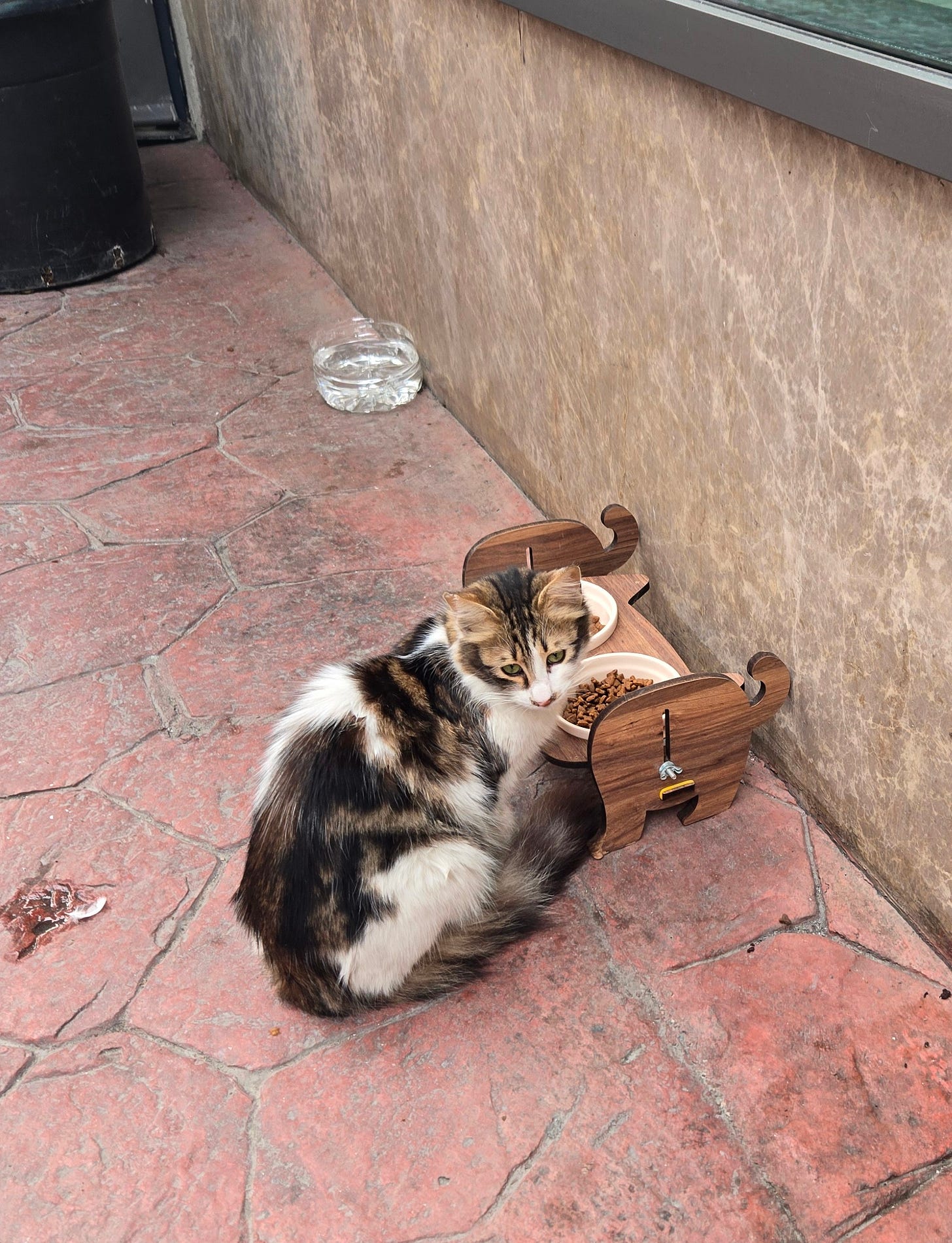

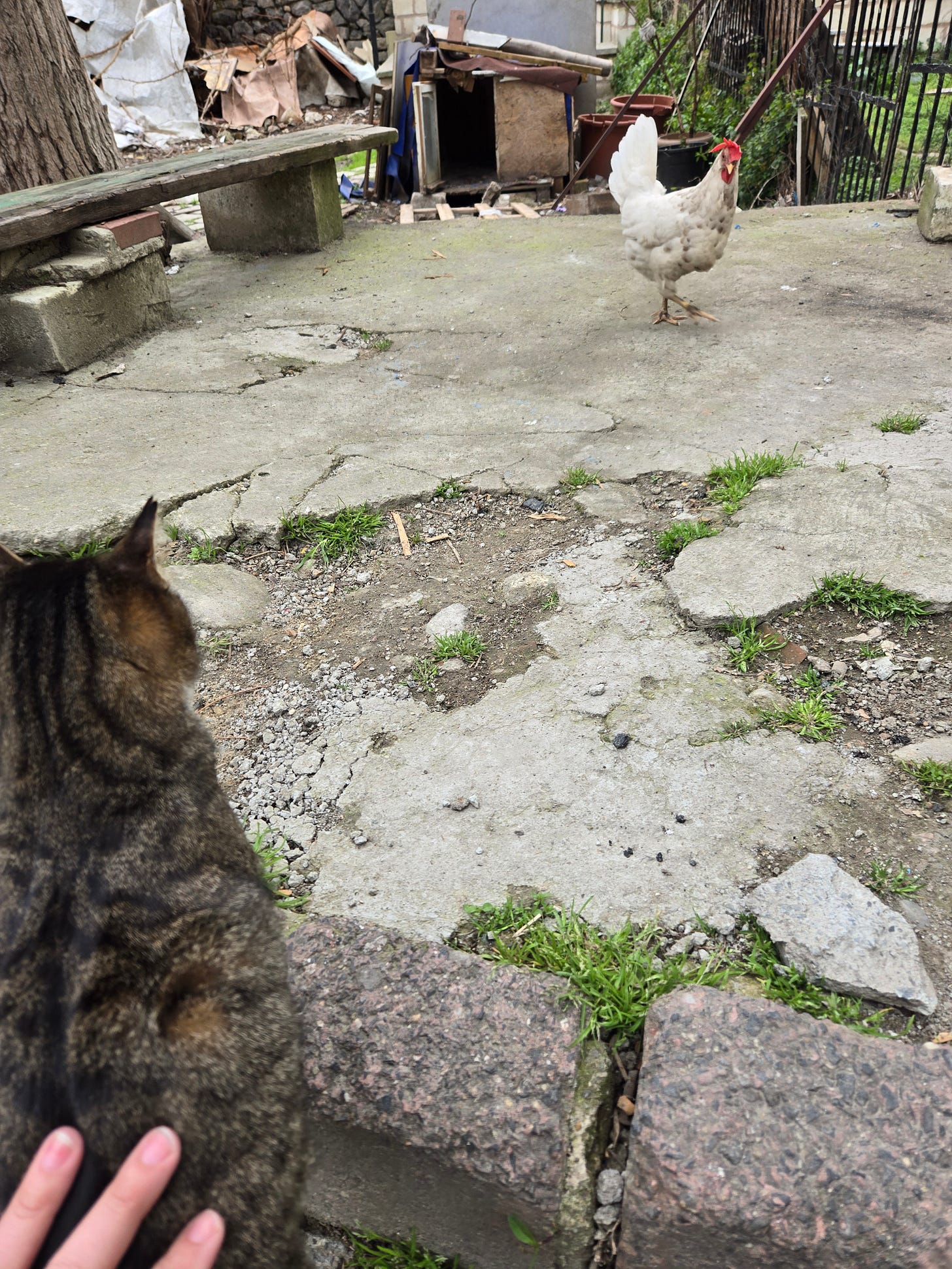
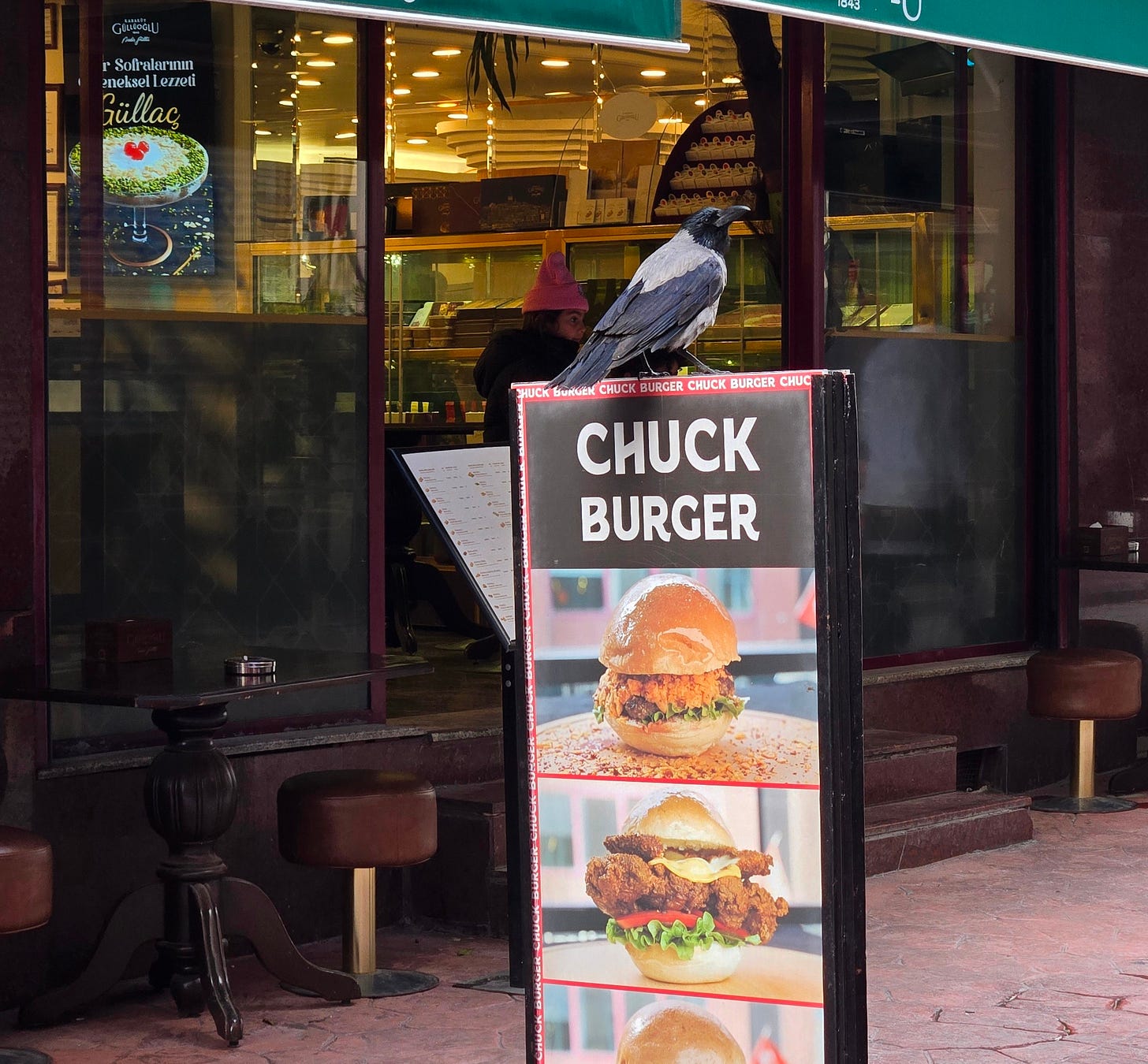
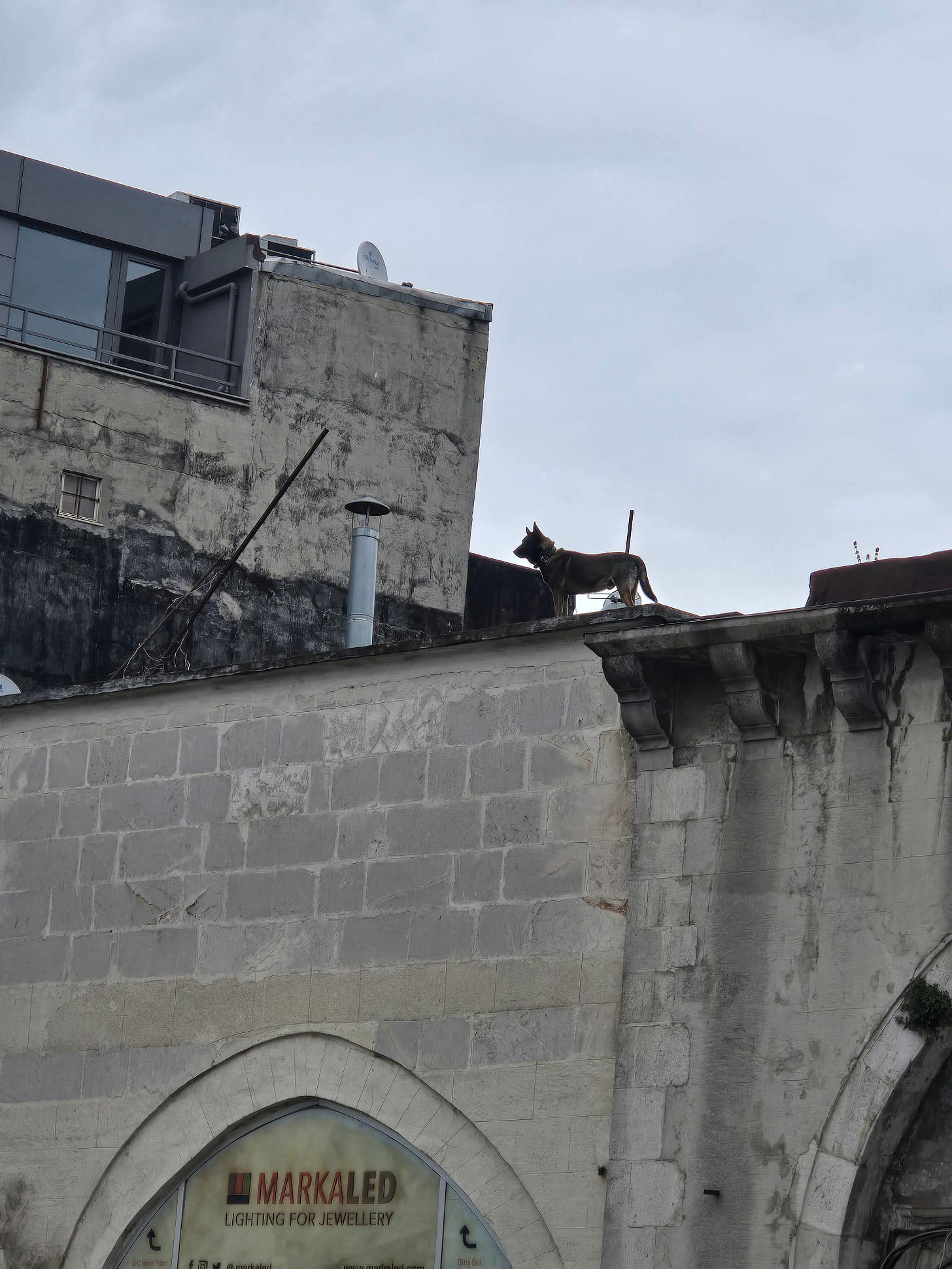
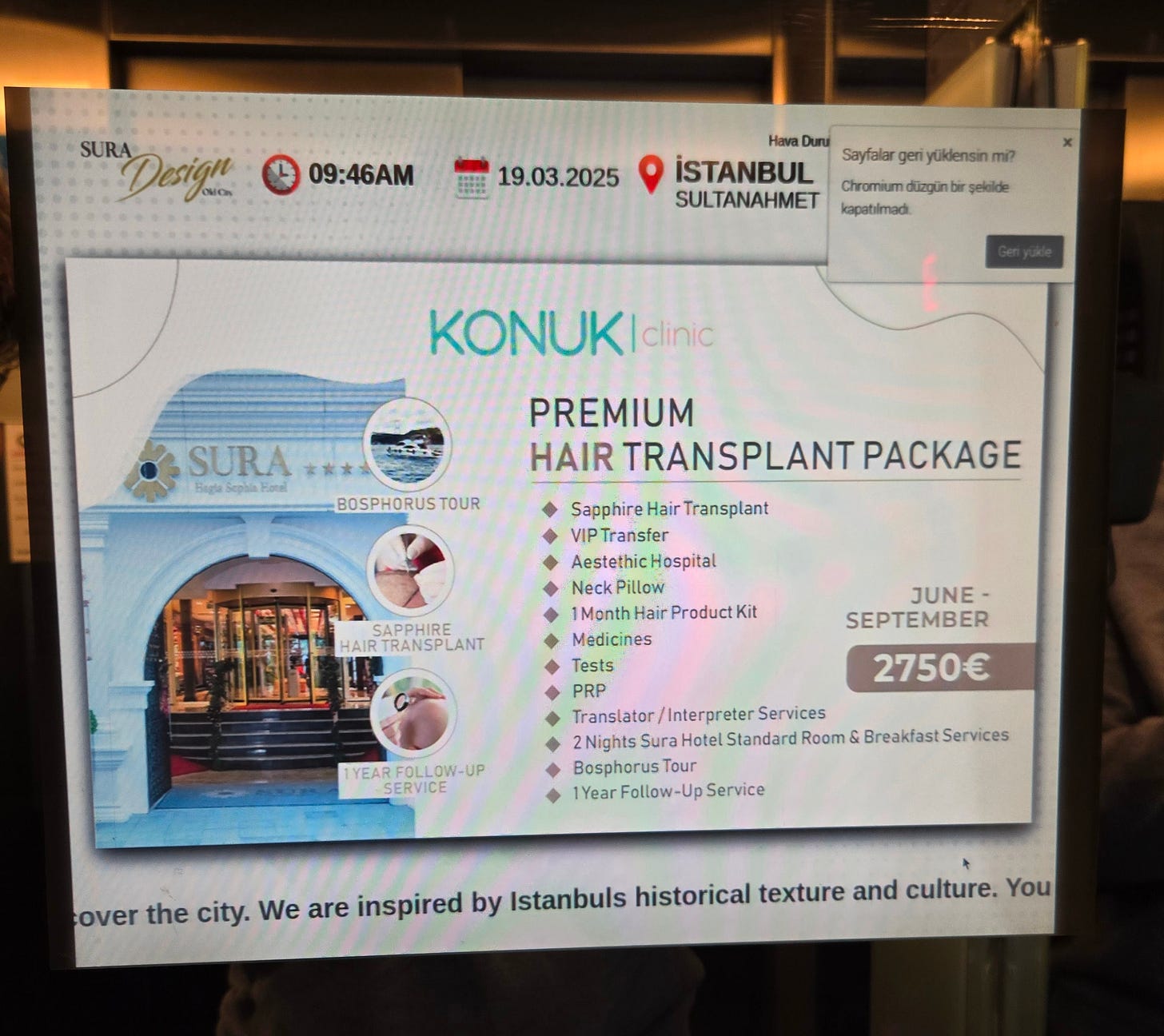
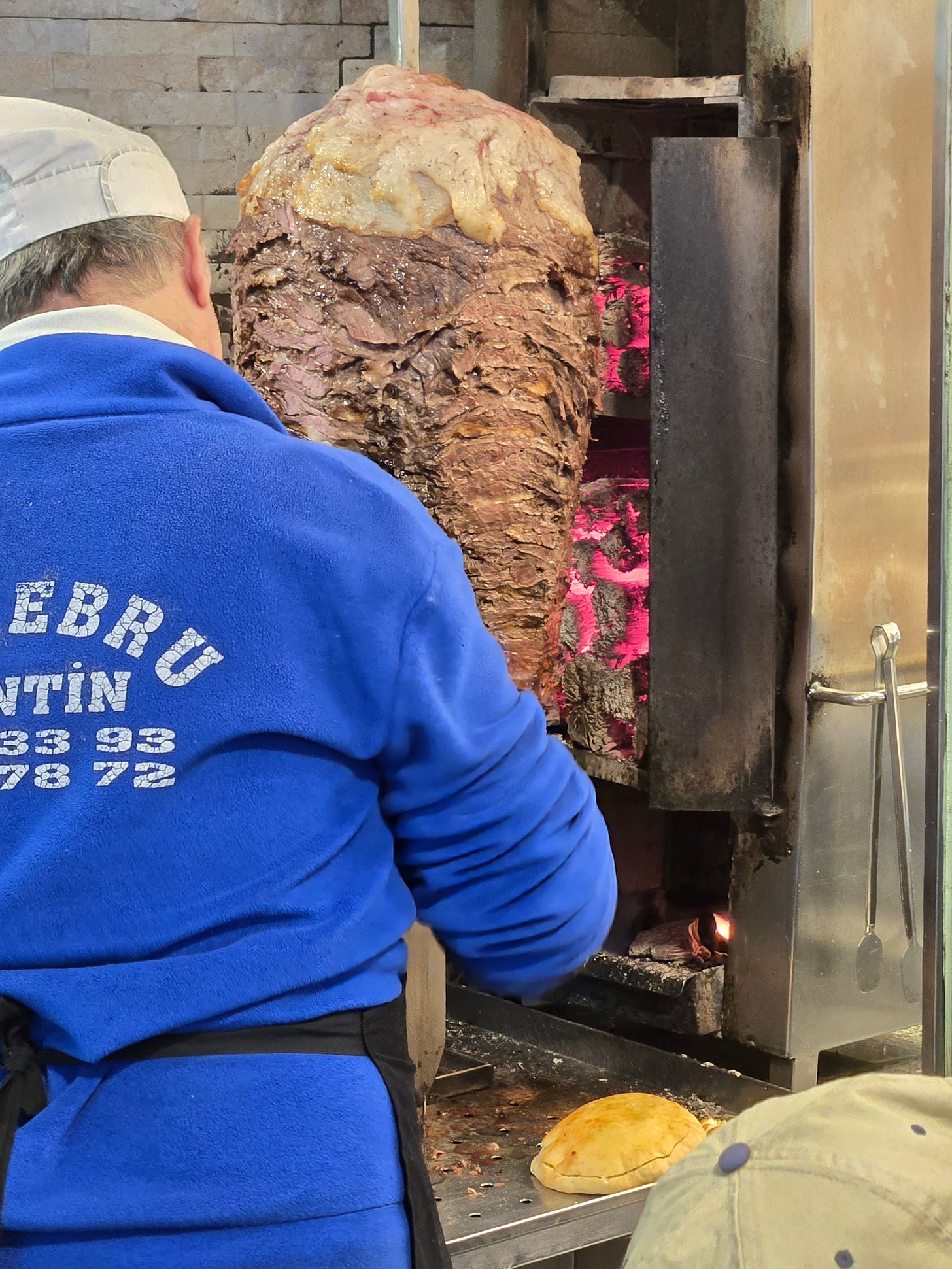
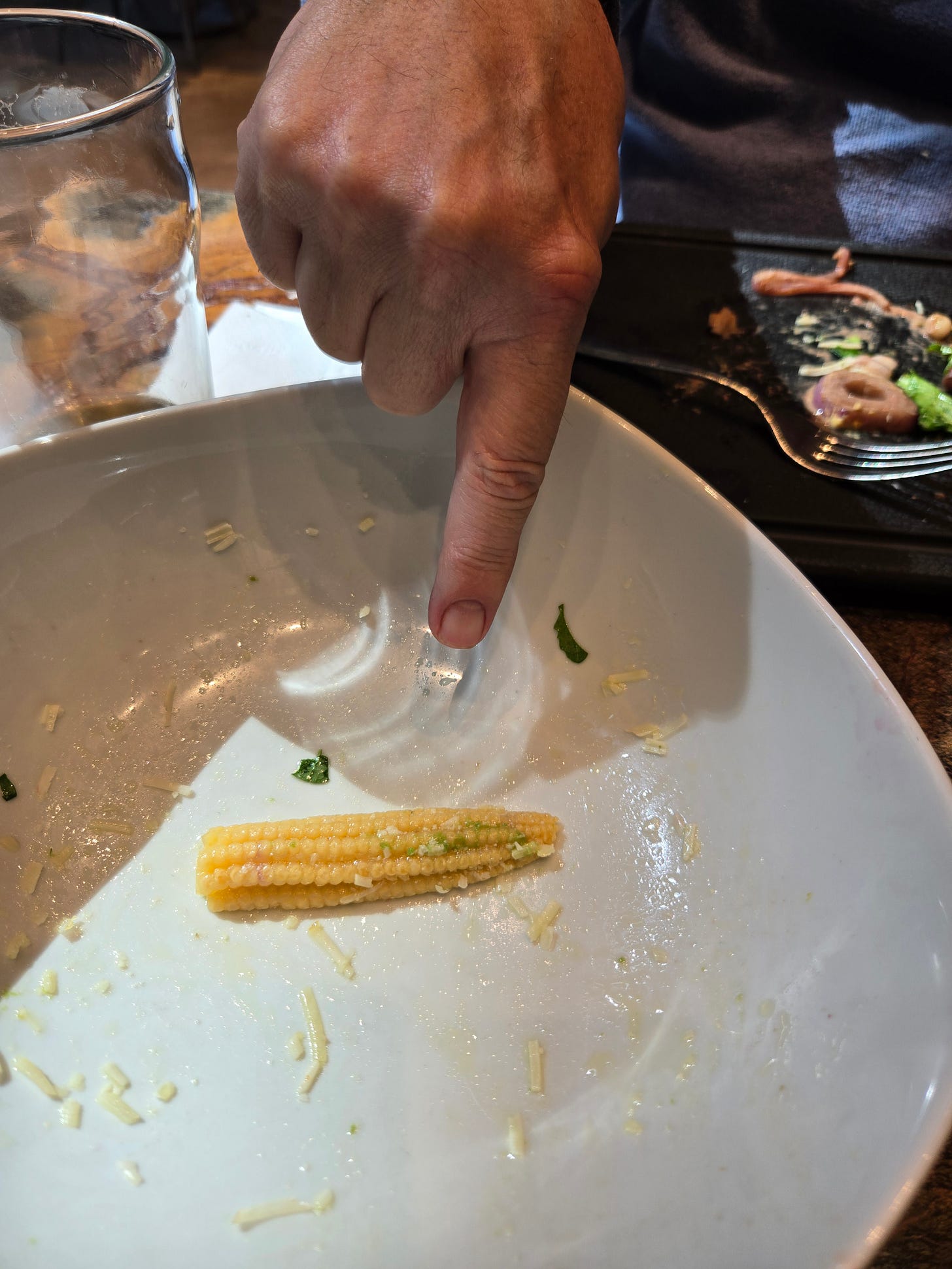
I want to clarify. I am a lifelong cat owner and cat lover (also love dogs). What would distress me is that unregulated breeding can only lead to the illness and death of many animals. There isn’t a solution when it’s cultural but I’d feel sad to see so many cats outside.
If not exactly sacred, like cows are in Hinduism, cats are revered in Turkish/Islamic culture dating back even before the Ottoman Empire where they played a critical role in protecting food and public health from rats and other vermin. The sayings of the Prophet Muhammad (Hadith) which provide guidance for Muslims apart from the Koran, have a number of references to his affection for cats, including the warning that anyone who kills a cat has to build seven mosques. There's a wonderful documentary about the cats of Istanbul called "Kedi" (Turkish for "cat") which used to be on Netflix and may still be streaming on other platforms.